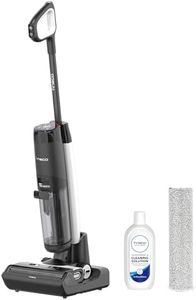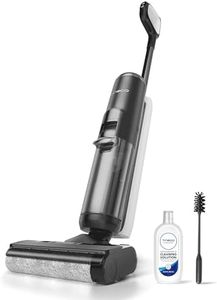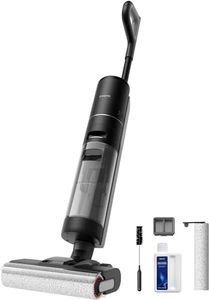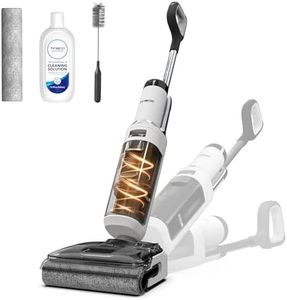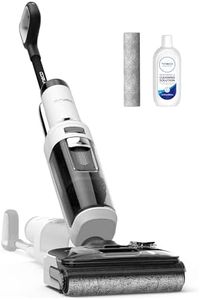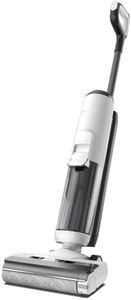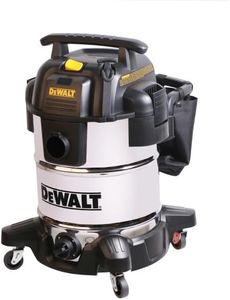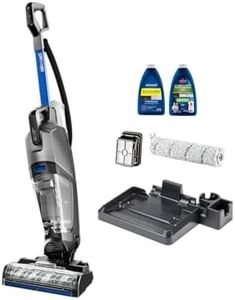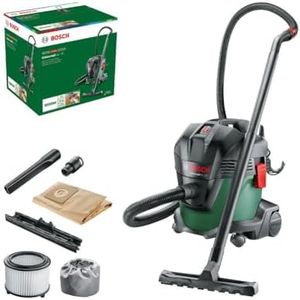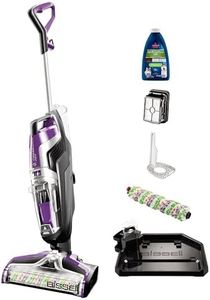We Use CookiesWe use cookies to enhance the security, performance,
functionality and for analytical and promotional activities. By continuing to browse this site you
are agreeing to our privacy policy
10 Best Wet Dry Vacuums
From leading brands and best sellers available on the web.Buying Guide for the Best Wet Dry Vacuums
When considering a wet-dry vacuum, it's important to understand that these devices are designed to handle both liquid spills and dry debris, making them extremely versatile for cleaning up in garages, workshops, basements, or even around the house. Before choosing one, you should think about where and how often you'll use it, what kind of messes you expect to clean up, and how much space you have for storage. Knowing the key features of wet-dry vacuums and how each one matters for your specific needs will set you up to pick a vacuum that fits your lifestyle and cleaning habits.Tank CapacityTank capacity is the maximum amount of liquid or debris the vacuum can hold before you need to empty it. This matters because a larger tank allows you to clean longer without stopping, which is good for big messes or large areas. Smaller tanks are lightweight and easier to carry or store. For quick cleanups or small rooms, a compact tank is fine; for bigger jobs, workshops, or if you plan to vacuum large spills, opt for a medium or large tank.
Suction PowerSuction power tells you how well the vacuum can pick up dirt, water, or heavy items. Stronger suction is essential for tough jobs like construction debris or deep-carpet cleaning, while lower suction is enough for light household chores. Look for a medium range if you want versatility, but go for higher power if you often deal with heavy, wet messes or thick rugs.
Hose Length and DiameterHose length and diameter affect how far you can reach and what kind of debris you can pick up. A longer hose makes it easier to clean hard-to-reach spots without dragging the machine around. A wider hose lets you pick up larger debris, while a narrower hose is better for tight spaces or smaller particles. Consider your typical cleaning area and what kind of messes you face to choose the right combination.
Filtration SystemThe filtration system determines how well the vacuum traps dust, dirt, and allergens before releasing air back into the room. Basic filters work for general cleaning, but if you're sensitive to dust or cleaning fine materials like sawdust, a HEPA or improved filter is better. For allergy sufferers or those cleaning up hazardous materials, always pick advanced filtration.
Portability and WeightPortability and weight influence how easy it is to move and carry your vacuum, especially if you have stairs or multiple floors. Lighter, compact models are easy to store and carry, while larger, heavier ones may have wheels for easier movement. Think about where you’ll use it most and how willing you are to lift or move a bulkier machine.
Blower FunctionSome wet-dry vacuums can also blow air, which can be handy for clearing leaves, dusting hard-to-reach areas, or drying floors. If this sounds useful—like if you use your garage or workshop a lot or want extra versatility—choose a model with a blower feature.
Cord LengthCord length decides how far you can move from the power outlet while still being plugged in. A longer cord gives you more freedom to clean large areas without changing outlets, while a shorter cord is fine for small rooms or if you always clean near plugs. Pick based on your workspace and how much freedom of movement you need.
Attachments and AccessoriesWet-dry vacuums often come with various attachments like nozzles, brushes, or crevice tools to handle different cleaning jobs. If you know you’ll need to clean car interiors, upholstery, or tight corners, make sure the vacuum includes or is compatible with the right attachments for your specific tasks.
